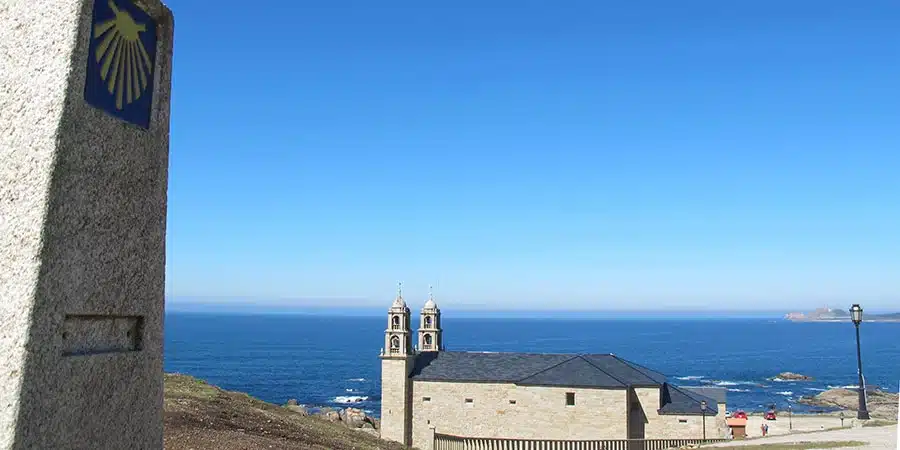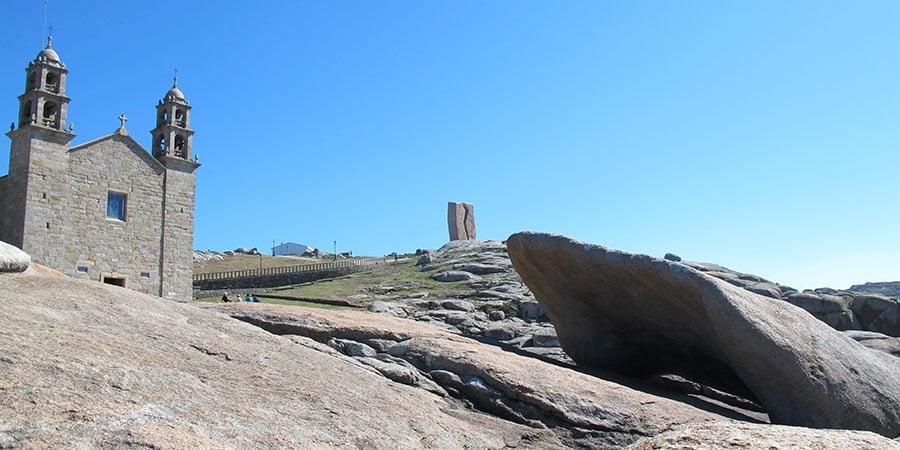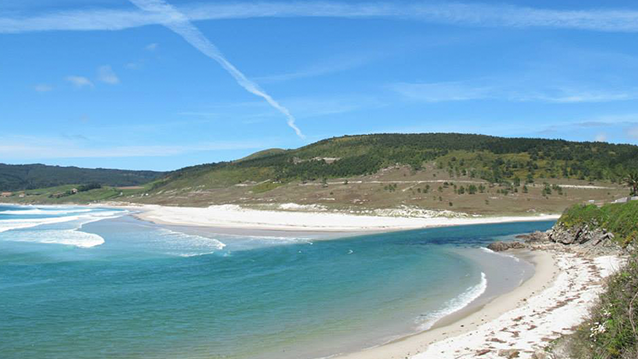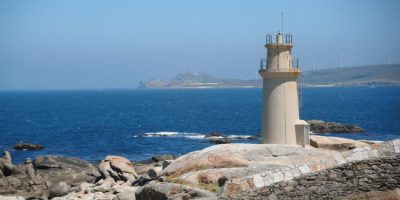A Sanctuary by the Atlantic
The Virgin of the Boat, or Our Lady of the Boat, is Muxía’s most beloved sanctuary. It stands at the very end of the Camino Finisterre and Muxía, overlooking the powerful Atlantic Ocean. Pilgrims who complete this route find peace in its breathtaking coastal setting.
A Unique Camino Route
The Fisterra and Muxía Way is the only Camino route that starts in Santiago de Compostela. It leads pilgrims further west to the Galician coast, where ancient pagan and Christian traditions blend.
A Sacred Site Since Ancient Times
The Our Lady of the Boat shrine—Nosa Señora da Barca in Galician—sits in a special location, right by the ocean. Before Christianity, villagers already worshipped here, making it a place of ancient spiritual significance. Many locals held on to their pagan beliefs, making conversion to Christianity a slow process.

The Legend of the Stone Boat
According to legend, the Virgin Mary arrived in Muxía on a stone boat to support Saint James in converting the locals. Near the sanctuary, you will find granite stones, believed to be the remains of her boat:
- The sail – ‘Pedra dos Cadrís’
- The helm – another large rock nearby
- The boat – ‘Pedra de Abalar’
Since the 12th century, many pilgrims have continued past Santiago to Muxía to honour Our Lady of the Boat.
Healing Stones and Ancient Beliefs
The sail stone, known as ‘Pedra dos Cadrís’, is believed to cure back pain and rheumatism. Walking under it nine times may even help with fertility. The rocking stone, ‘Pedra de Abalar’, is said to predict catastrophes and possess healing powers. These beliefs may pre-date Christianity.

The Sanctuary’s History and Restoration
In the 12th century, builders founded the first sanctuary of Our Lady of the Boat, replacing a pre-Christian chapel. They later rebuilt it in the 17th century.
On Christmas Day 2013, lightning struck the church during a storm, causing a devastating fire. It was restored in 20215.
The Festival of the Virgin of the Boat
September is a wonderful time to walk the Camino de Finisterre and Muxía. The village celebrates its biggest festival, the ‘Romaría da Virxe da Barca’, on 9th September. This traditional pilgrimage is so famous it even inspired a Galician folk song.
The Special ‘Muxiana’ Certificate
Did you know you can earn a pilgrim certificate by walking to Muxía? It is called the ‘Muxiana’ and is a great way to commemorate your journey.
Plan Your Camino Adventure
For more information about the Camino Finisterre or any other Camino de Santiago routes or to book your Camino trip, contact us. Plan your Camino effortlessly and get an instant quote with our Camino Planner.


